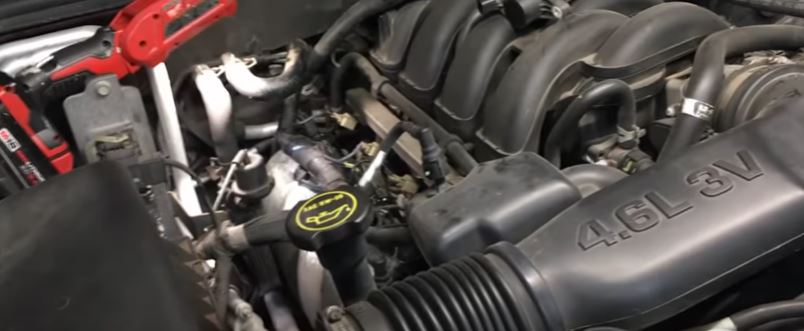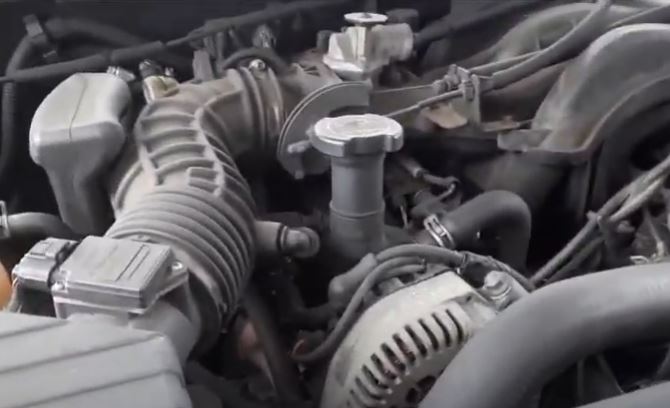The 2006 Ford Explorer transmission is one of the most significant characteristics of outstanding automobiles. It is attached directly to the motor and translates the combustion energy into momentum, which turns the wheels. On the other hand, automobiles require a transmission to transmit engine thrust to the motor shaft and a variance to allow the wheel to rotate.
As a result, it’s critical to know when your transfer fails and why to avoid a threatening situation and a costly repair. Your car will not be allowed to navigate without your transmission, and that is why you must take measures to extend the engine’s life. As a result, this article is a complete resource for you to learn why your 2006 Ford Explorer transmission is so essential. Let’s get started right away, without any further ado.
2006 Ford Explorer Transmission Specifications

Whether you’ve been driving throughout town or across the region, the Ford Explorer is fitted with everything you’ll need to remain connected, hopeful, and excited. With its powerful presence, possible future features, and powerful EcoBoost 2.3L engine, it’s merely unstoppable. The facade of the Ford Explorer is beautifully refined, with a variety of colors to choose from. The decor of the Ford Explorer does seem to be sufficient in terms of design. Above all, it’s a great vehicle for the whole family.
Nonetheless, the 2006 Ford Explorer transmission features an automatic transmission with a 10-speed shiftable mode, perhaps one of the most remarkable aspects. The vehicle is a remarkable choice for future aspects, from remarkable engine functions to Powerful Transmission workability. Some of its striking transmission features are mentioned below.
| Engine Type | Gas V6 |
| Net Horsepower @ RPM | 210 @ 5100 |
| Net Torque @ RPM | 254 @ 3700 |
| Trans Description | Automatic |
| Drivetrain | Rear Wheel Drive |
| Trans Type | 5 |
| Reverse Ratio (:1) | 3.07 |
| First Gear Ratio (:1) | 3.22 |
| Second Gear Ratio (:1) | 2.29 |
| Third Gear Ratio (:1) | 1.54 |
| Fourth Gear Ratio (:1) | 1.00 |
| Fifth Gear Ratio (:1) | 0.71 |
2006 Ford Explorer Transmission Fluid
All parts of your vehicle’s transmission are lubricated with transmission fluid. This enables the components to transition more smoothly together, resulting in less heat. Due to the obvious automatic transfer, the 2006 Ford Explorer transmission fluid is made of synthetic fluids and greases merged with organic chemicals.
The most trustable type of transmission fluid used for the precise driving process and its components is Valvoline – DEXRON®-VI ATF Full Synthetic Automatic Transmission Fluid. The transmission fluid capacity of the 2006 Ford Explorer is 11 quarts. However, you must recognize how to add the fluid to the car to function properly correctly.
The steps to add 2006 Ford Explorer transmission fluid are:
- Check to see if your car has a dipstick.
- To find out if your car has a sealed transmission, look in the owner’s manual.
- Check the temperature of the transmission fluid, which should be between 185 and 194 degrees.
- Remove all of the clips and bolts from the front fender.
- There should be a transmission fill plug there.
- Take out the fill plug.
- Locate and install the transmission fill adapter into the fill hole.
- Connect a vacuum regulator to this fill adapter.
- With the fluid extraction tank, adjust the fluid regulator.
- Fill the transmission fill plug with air.
- Locate the transmission drain plug and remove it.
- Attach the level gauge to the drain plug and manually tighten it.
- Turn off of the vacuum and check to see if the fluid is still coming out of the gauge. If you see fluid heading out of the gauge, it means there was an excessive amount of transmission fluid present. There is much less fluid or the correct amount of fluid if there is no fluid.
2006 Ford Explorer Transmission Dipstick and its Location

Dipsticks are tools used to check the level of fuel in an engine. On a broad level, it indicates that the oil level is low and requires replenishment. A dipstick’s handle is usually T-shaped or ring-shaped, making it very easy to locate.
Various models of vehicles may have a different place for the transmission fluid dipstick. The dipstick is usually located on the left side of the engine in most models. It usually has a visible yellow or orange circular handle. A long chunk of metal will slip right out of the engine when you pull this handle. The transmission dipstick on a 2006 Ford Explorer is usually located further back in the engine bay, near the firewall (the front bulkhead).
2006 Ford Explorer Transmission Solenoid

A transmission solenoid, also known as a cylinoid, is an electrical valve that regulates fluid flow into or out of an automatic transmission. They pop open in response to electrical impulses from your car’s engine or transmitter servo controller, and they control the flow of brake fluid throughout the transmitter.
Your 2006 Ford Explorer transmission solenoids are positioned inside the valve body. The starter motor will not work if the starter solenoid is damaged. If you flip on the starter switch or press a button, the engine will not start. The transmitter may not shift out of neutral because the motor is not getting the proper signals.
If the solenoid is damaged, it can be replaced with a new one. A single transmission shift solenoid can cost anywhere from $15 to $100, depending on the model and prototype of your vehicle. A pack can cost anywhere from $50 to $300.
2006 Ford Explorer Transmission Problems
For multiple generations of Ford vehicles, it had been a recurring occurrence. Except for a few recalls, Ford didn’t do much to assist customers. Repairing these issues would range from $1800 to $3400 on average. According to complaints, these issues began to appear after the car had traveled 94,800 miles. This would receive a 9.3 on a scale of 1 to 10 for the severity of the problem.
The engine will make a shifting or clunking sound when the 2006 Ford Explorer transmission slips. You might have this problem if your transmission hasn’t been properly maintained. A recall of the confined transmissions should be Ford’s solution to this problem. Likewise, they could propose that the transmission be replaced.
The last of transmission problems is the need for overhauling. A complete transmission reconstruction would be the best approach in this situation. Or else the transmission would need to be completely overhauled. This problem occurs every 90,000 miles on average and costs $2500 to fix.
Another problem many users face is when the 2006 ford explorer transmission won’t go in reverse. If the shifter or switch bushes are rough, the transmission may be difficult to shift into gear. In this case, a complete transmission rebuilding would be the best choice.
FAQs Related to 2006 Ford Explorer Transmission
What year are Ford Explorers experiencing transmission issues?
The worst year model was the 2006 Explorer, followed by the 2002 and 2004 Explorers.
Is really a 2006 Ford Explorer a dependable vehicle?
The 2006 Ford Explorer has a 3.5 out of 5 serviceability rating. For all car brands, it is ranked 21st out of 32. So, it is partially a reliable vehicle for you.
How long is it expected to take for transmission to complete?
If they are not serviced and maintained, a few transmissions can screw up for as little as 100,000 miles. If you drive between 10,000 and 15,000 miles per year, your transmission might fail in as little as seven years!
How far can a 2006 Ford Explorer travel?
A Ford Explorer can easily cover 80,000 to 200,000 miles on a single charge.

Concluding Thoughts
This model is a great choice for opulent Ford vehicles. It is a perfect fit for a motorized vehicle, from engine workability to production advancements. So, now that we’ve discussed the 2006 Ford Explorer transmission think about your requirements and make your ultimate decision!
